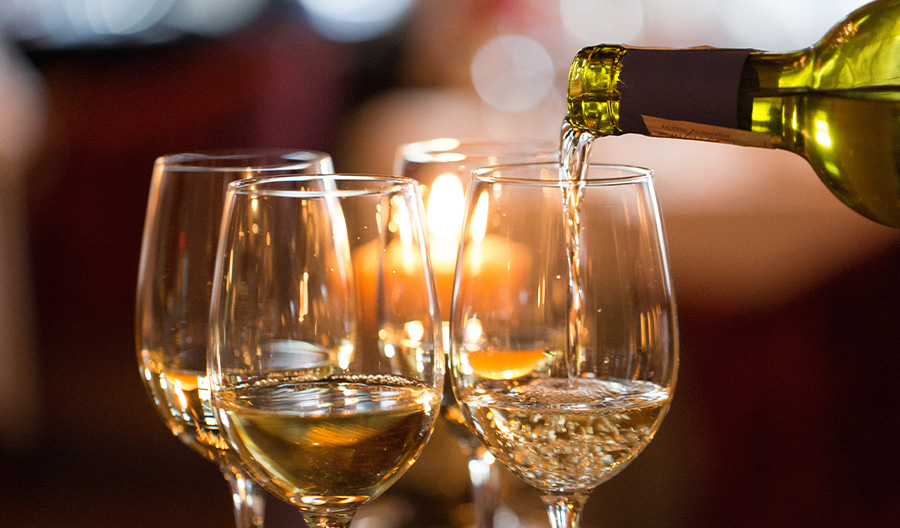Recently, the president of a winery in Lake County, California, got a call from a major grocery. Their Pinot Gris is flying off the shelves—can you make more?
The sommelier consultant at another winery, ran into a similar problem: He couldn’t keep white wines on the list. “In May, we basically stopped selling reds,” he says.
Recently, consumers seem to have been craving one thing: crisp white wines.
Sauvignon Blanc sales are surging. New Zealand’s exports of white wine grew 20% in the year ending June 2023. According to NIQ, while other wine sales remained stagnant or dropped, white table wines were the only category to see growth.
Unpacking the Fad
There are a few things at play driving the growth.
Firstly, alcohol has been on the outs lately. With the WHO pushing anti-alcohol messaging, it’s understandable that drinkers flinch at high-abv reds. White wines, especially high-acid, low-alcohol varieties like Pinot Gris and Sauvignon Blanc, appeal to consumers who are navigating conflicting alcohol consumption messaging.
“Of course, it also helps when Taylor Swift mentions white wine 19 times in her songs,” one wine industry expert laughs.
Stephen Ott, who imports Mexican and Portuguese wines and has seen Vinho Verde sales spike, believes new demographics are pushing white wine sales. “In the past, high-end steakhouses, the country club dining room and the private collector’s cellars encouraged a focus on reds that pair with steak,” he says. “Now, this generation drinks wine at music festivals, camping trips and pools—white wines lend themselves better to these activities.”
Today’s drinkers also pair wine with a world of flavors. Look at this year’s James Beard Best New Restaurant nominees: Thai, Filipino, Mexican, Senegalese and a California seafood restaurant. The flavor profiles in these cuisines happen to work particularly well with white wines. “There’s an ever-broadening diversity of culinary traditions represented in restaurants,” says Ott. “White wines tend to have a broader pairing versatility. It’s driving sales.”
Moemu Seo, head sommelier and wine director at Bangkok Supper Club in New York City, has found customers have leaned hard into white wines with dishes her restaurant serves, ones that highlight acid, heat and aromatics.
But beyond food, she’s found today’s wine drinkers are just savvier. “Millennials and Gen-Z are curious drinkers—they ask questions and are open to suggestions.”

Napa’s Next New Thing
This transition is happening all across the globe.
Cabernet has long been king in California, but its domination is beginning to wither. Sonoma County leads with the most Sauvignon Blanc acreage in the state. And, in Napa Valley, plantings of the crisp white grape are up 40% since 2000.
Other varietals are benefitting from the newfound interest in whites as well.
A vineyard in Napa makes both Chenin Blanc and Viognier. Their winemaker is excited by how trendy white wines have become. “Napa has been so focused on Cabernet Sauvignon. It’s delicious, but I’m glad we are expanding outside of the norm,” she says.
“We also can’t ignore that the climate is changing,” she continues. “The varieties that have thrived in Napa may not be the best varieties to grow anymore. We should always be changing, adapting and experimenting with our vineyards and winemaking.”
White Wines and Climate Change
The attention on whites is exciting for the daughter of a multi-generational wine-making family, who oversees their winery in Sonoma. “It gives us even more motivation to keep making the wines we love—Viognier, Sauvignon Blanc, Chardonnay—and experiment with varieties that typically would have gone into blends,” she says. They’re working on planting more white grapes. “It helps avoid the risks associated with wildfires, like smoke taint.”
In 2020, 40% of Pinot Noir crop was dumped or abandoned after catastrophic fires hit the west coast. Because of this, many winemakers pivoted—picking quickly and pressing the Pinot Noir into a white wine to avoid the smoke-tainted skins.
And this style—which includes still Blanc de Noirs, white Malbecs or golden Pinot Noirs—is growing outside fire years. Why? It’s a good use of leftover fruit and adds color to an all-red line-up.

